At the moment there is a four week disruption to the Sunbury line in order to place the tracks underground at Main Road and Furlong Road, and open new railway stations at St Albans and Ginifer. I’m curious as to why such a length of time is required to complete this set of works, when other projects in Melbourne suggest it could have been achieved with less disruption.
Some background
Level crossing removal projects in Melbourne can be classified into two groups – “online” and “offline”.
Offline projects cause the least inconvenience to rail users – a new railway line and station is built beside the existing tracks while trains continue running, with the only disruption being the week or so it takes to disconnect the old tracks and hook in the new ones.
Examples of off line projects include Boronia Road at Boronia station, Springvale Road at Nunawading station, and Burke Road at Gardiner station.
However in areas where there is no spare land inside the railway corridor, offline construction is not possible, forcing the new tracks to be constructed on the same alignment as the existing, requiring the shut down of rail services while the works take place.
Examples of online projects include the Middlebrough Road level crossing at Laburnum station, the Rooks Road level crossing at Mitcham, and the Ormond, McKinnon and Bentleigh trio on the Frankston line.
So what about St Albans and Ginifer?
The grade separations at Furlong Road and Main Road are being built offline, thanks to the abundance of land adjoining the existing Sunbury line corridor.
The first stage of works was the relocation of signalling cables, so that excavation of the new tracks would not affect rail services.
Land was cleared beside the existing railway stations, so that the new low level stations could be built.
At separate times Main Road and Furlong Road were closed to road traffic.
These shutdowns allowed concrete bridges to be constructed over the future railway.
To reduce the amount of time road traffic was disrupted, just enough of the bridge foundations and deck were constructed to span the gap – allowing the rest of the rail cutting to be excavated as time permitted.
Piling works commenced to construct the future cutting walls.
Then the excavators moved in to create the rail cuttings.
With none of this affecting passing trains.
Work also started to fit out the new stations – with station buildings, platform, lamp posts, staircases and lift wells all being put into place.
As the four week long shutdown of the Sunbury line from October 4 was fast approaching, and a limited amount of time available to complete the works while trains are not running, one would assume that any task that could be completed while trains are still running would have been completed. But the reality looks different.
This was Ginifer station on September 29 while trains were still running – the new level station was just a bare concrete shell, with no tracks to be seen.
And here is the view north of Main Road at St Albans – an empty rail cutting, with no progress on the new tracks, signalling equipment, or overhead structures.
Maybe taking the trains away would mean work can speed up? Revisiting the Main Road overbridge on October 16, two weeks into the shutdown, suggests otherwise – the only change to the scene is the removal of the old tracks, and the addition of overhead structures.
So why was a four week shutdown of trains required at St Albans, when other projects required far shorter periods of time?
Some theories
My first theory was the size of the works – despite being a single project, the grade separation through St Albans requires four connections to the existing railway tracks – thanks to the rollercoaster trench alignment through Ginifer and St Albans stations. However this theory is easier to discount – each tie in could be constructed in parallel, assuming the availability of enough equipment and workers.
Another theory was the availability of railway signalling engineers. With multiple level crossing removal projects underway in Melbourne at the same time and a critical shortage of engineers in Victoria, perhaps the only way to find staff available to work on the Furlong Main project was to timetable it over a longer period?
Ground conditions are another variable. Melbourne’s west lies on a bed of basalt all the way down, which unlike the sand found under the recent Frankston line works, need to be slowly broken up before it can be hauled out of the rail cutting.
The presence of rare native plants along the railway reserve is another possible factor. Native grasslands are found at Ginifer and St Albans, occupying land that could otherwise be used as part of an offline grade separation, as well as restricting easy access to the tracks during construction works.
And the final wild card is politicians, as this media release from the Minister for Public Transport dated October 2016 shows.
St Albans Level Crossings Gone By The End Of The Year
The two dangerous and congested level crossings in St Albans that the Andrews Labor Government is removing will be gone by the end of the year – more than six months earlier than promised.
Minister for Public Transport Jacinta Allan announced that the construction blitz beginning today will see the crossings at Main and Furlong Road removed well ahead of schedule.
Maybe the trains have been taken away so that the project can be finished sooner, so that the politician’s level crossing removal tally can keep on ticking along?
The official word
I ended up emailing the Level Crossing Removal Authority as to why a four week shutdown of trains was required for the Furlong Main works when projects such as Bourke Road did it much quicker, and this was their answer:
The Burke Road level crossing removal was similar to what we are doing out in St Albans with constructing the new railway corridor next to the existing however the ground conditions are very different.
In St Albans we have a lot of basalt rock which is very hard to break. These ground conditions are also where we are connecting the existing track with the new lowered railway line and are longer than Burke Road.
This means we need to excavate at four separate locations where we are tying in along with some temporary walls closest to the existing railway line and all during October.
We are also removing the two existing stations which are right next to the new railway corridor. For safety reasons we could not have trains running whilst we undertake these works.
The project in St Albans also has quite a few areas which are environmentally protected therefore there is limited access in and around where we are constructing the new lowered railway corridor.
Difficult ground conditions? Check!
Working around grasslands reserves? Check!
The long connections between the new and old tracks were something I’d missed, but as you can see in my photo taken north of St Albans halfway through the shutdown, the scale of the work is apparent.
But the proximity of the running lines to the new stations is a little trickier to see, such as this view behind the old Ginifer station.
However the Level Crossing Removal Authority’s Facebook page takes a closer look, such as this view of the temporary wall that was required to separate the original upper level tracks from the new low level platforms at Ginifer station.
Temporary walls also look to have been used on the eastern side of the new St Albans station.
So where does the truth lie?
In reality I think the truth lies somewhere in the middle – there are plenty of good reasons why the works at St Albans are taking longer than other similar looking projects in Melbourne, but there is evidence to suggest a shorter disruption to rail service could have been possible if more preparatory work was completed before the main shutdown.
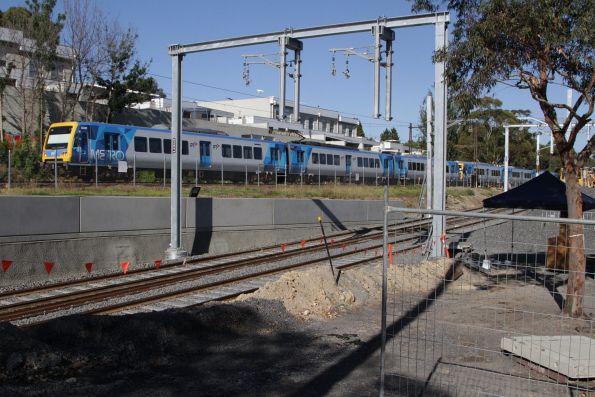
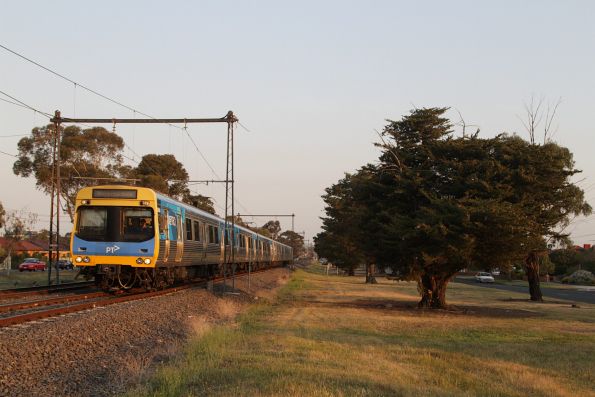
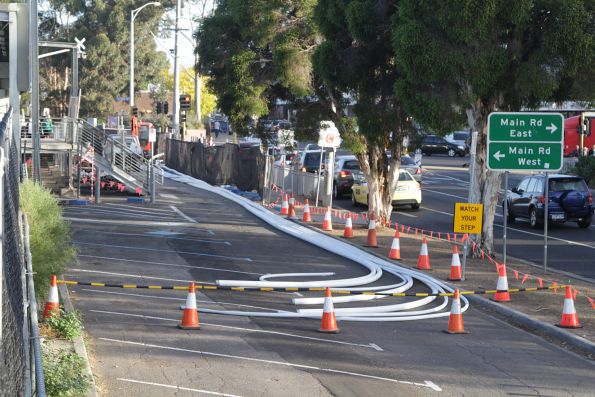
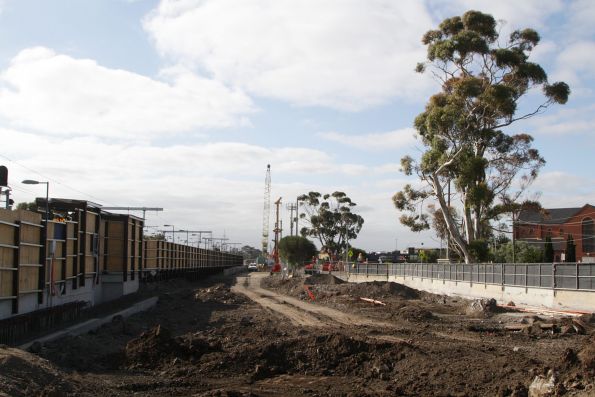
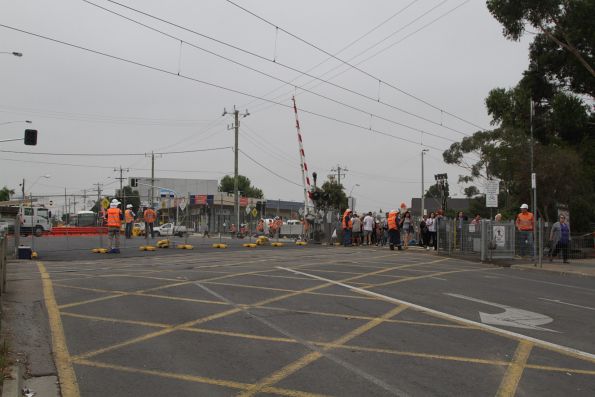
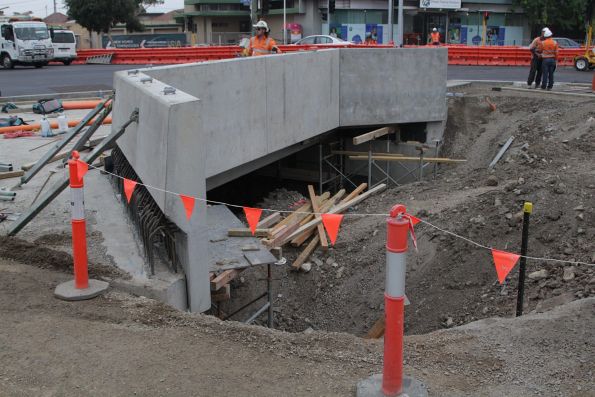
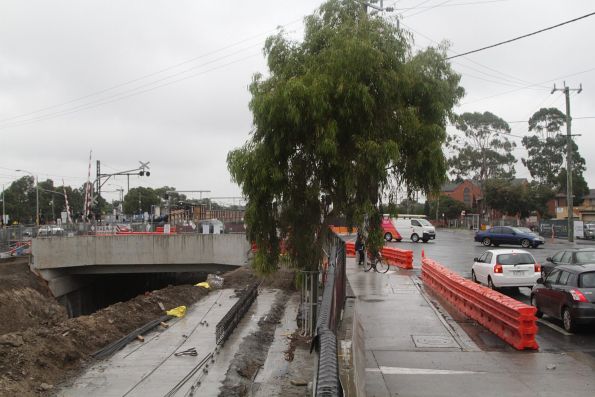
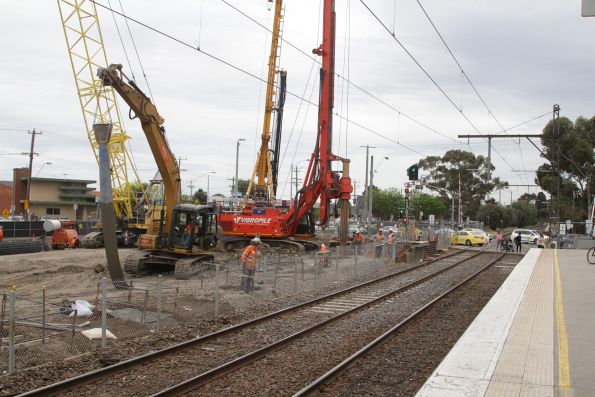
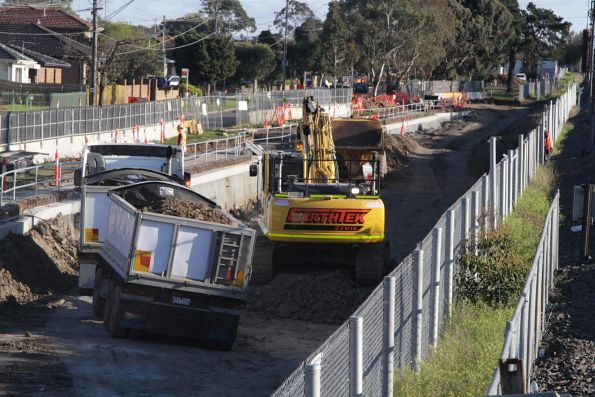
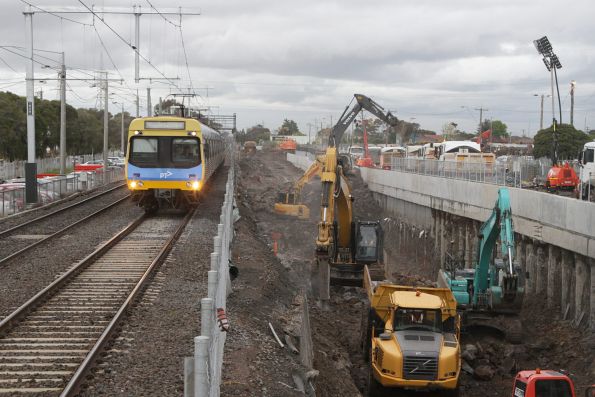
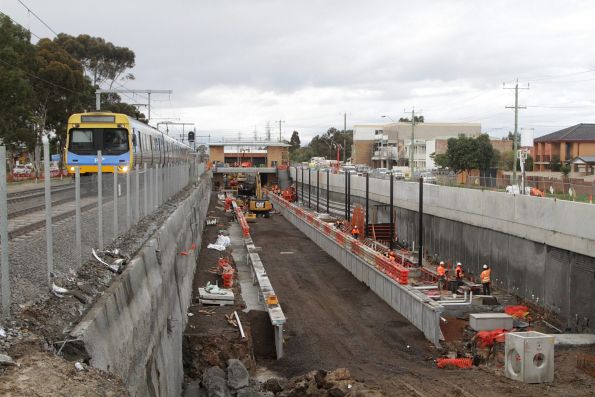
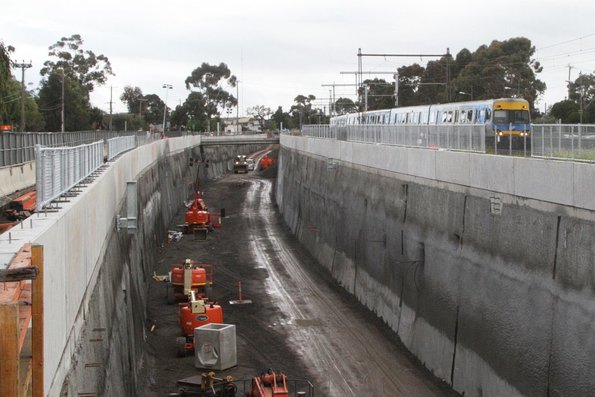
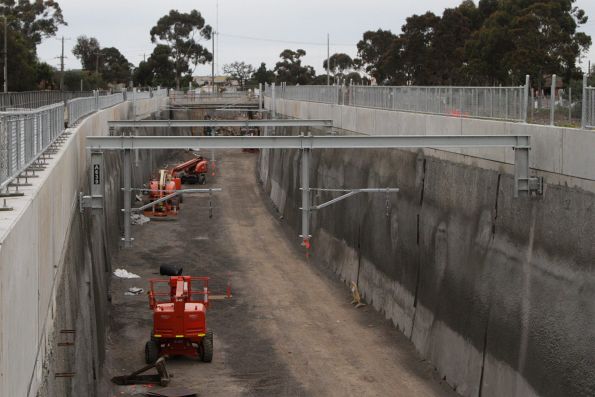
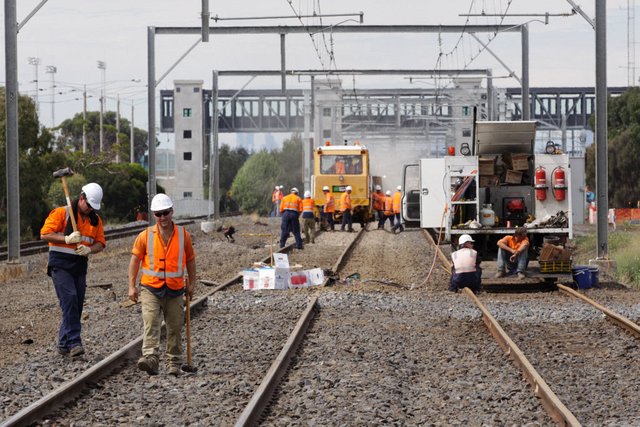
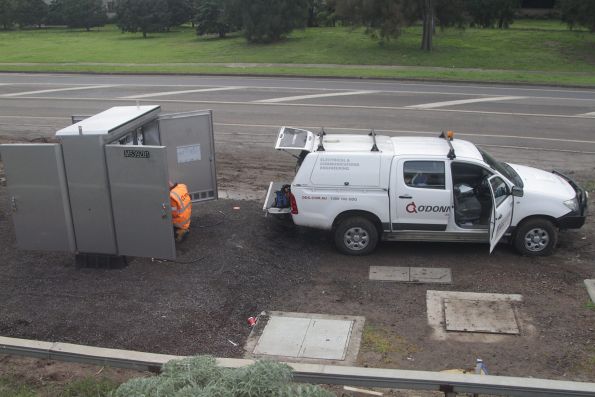
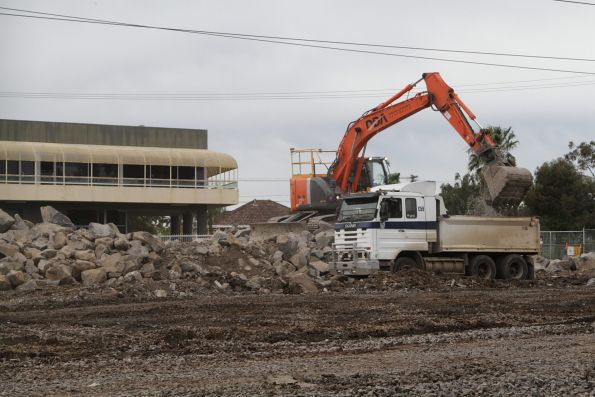
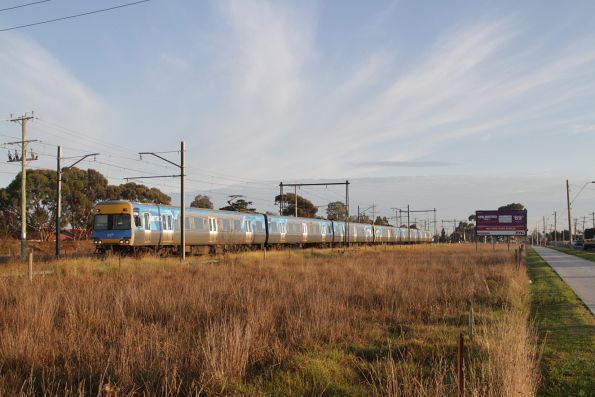
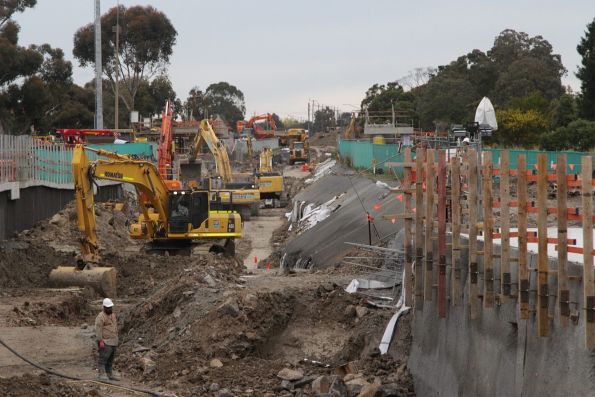
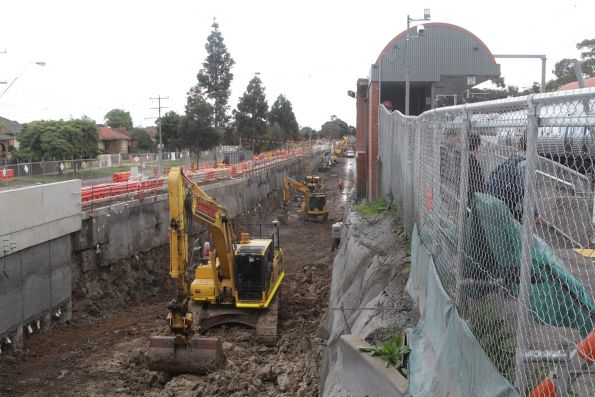

On the plus side, a lot of work is being done on the Bendigo line while the shutdown is on, including sleeper replacements, and to the north of Eaglehawk, complete track replacement. Sure it might be tedious having to catch a bus from Sunbury to SCS, but the impost on regional travellers is much greater, extending peak hour journeys by over an hour in some cases, due to the ridiculous amount of car traffic on the Calder from Kings Avenue onwards, plus the effect of the Tulla widening on that traffic.
Somehow I forget about the Regional Rail Link works on the Bendigo line – the entire route from Sunbury – Bendigo was closed on 17 January 2005, reopening to Kyneton on 2 November 2005, and the rest of the line on 20 February 2006. That’s over a year!
The bus replacements for the RFR project were a PITA:
http://www.theage.com.au/news/national/commuters-angry-at-rail-delays/2005/06/22/1119321789208.html
Back in 12005 I was commutering from Geelong and had to put up with them for a number of weeks.
I wonder if they did consider installing track in advance, but ended up deciding it would be just as quick (or simply, cheaper) to go through and do it all in one go?
If you actually see how quickly they have installed it, for the entire length, it’s been just a few days!
If they were using some form of automated track layer, doing it all in one go would make sense. But at St Albans they just used a single ‘octopus’ spreader to lay the track, placing eight sleepers at a time.
I like your classification of level crossing removal projects as “online” or “offline”. The classifications are important when comparing the available options and impacts for each level crossing removal site. But I think a 3rd category is needed, for projects that are half’n’half.
The North-McKinnon-Centre project on the Frankston line was actually a half’n’half. Due to the generally wide corridor and 3-track configuration, piling works were able to be completed “online”. The easternmost (down) track was closed while piling was undertaken on the east side. Then it was reopened, and the westernmost (up) track was closed for piling to be undertaken on the west side. At most times, 2 tracks remained operational, so the 6+ months piling works were mostly undertaken “online”.
There were 33 days of 2- to 9-day duration shutdowns during this stage – ie: “offline” – for preparatory works, service relocations, signal and power changes, bridge construction and station demolition.
Then came the “big dig”: 37 continuous days of closure while major works were undertaken “offline”. The end result was a half’n’half project.
If trenching or short bridging was used on the the Caulfield to Dandenong project, it would have been a mostly “offline” project. (Assuming short bridging was even possible between the closely located Carnegie, Murrumbeena and Hughesdale stations.) This would have been very disruptive for 25+ thousand daily train users, with the tracks closed potentially for many months. The major advantage of the long elevated viaducts solution for Caulfield to Dandenong is the ability to construct the viaducts “online”, due to just enough space being available alongside the existing tracks. This project will end up being a half’n’half, due to the preparatory and finishing works that will be needed. But the amount of “offline” time should be much lower than if trenching or short-bridging methods were used.
On the southern end of the Frankston line, no matter which removal method is used, the works will be mostly “offline”, due to the very narrow rail corridor, and availability of only 2 tracks. It’s going to be very disruptive for 10+ thousand daily train users, with the tracks closed potentially for many months. Most people probably don’t yet realise what they’re in for.
Over at the Blackburn Road works they got lucky – there are only two tracks between Blackburn and Nunawading, but some free space either side of the rail corridor. This allows the piling rigs to start work while trains are still running.
I believe similar works were possible for part of the Middleborough Road and Mitcham projects – despite their need to close the railway for an extended period to dig out the tracks.
Unsafe to dismantle the old stations, after the new line is in use ? That’s unconvincing. How many people are injured falling down the steps of buses.
If you had a look at St Albans Platform 2, it was actually demolished and replaced with a temporary platform, which was cantilevered over the cutting. Which means yes, it would be unsafe to dismantle. If it failed, it would have gone straight into the new platform below.
While it looks like that wasn’t the case with Ginifer, it is still precariously close.
Here you can see the new low level platform at St Albans peeking out from beneath the cantilevered structure above.